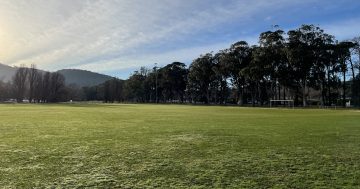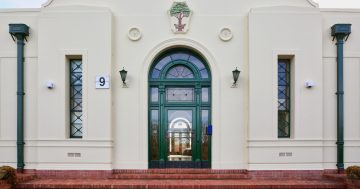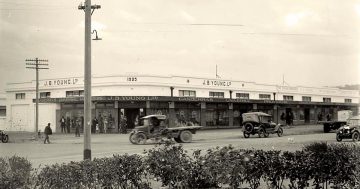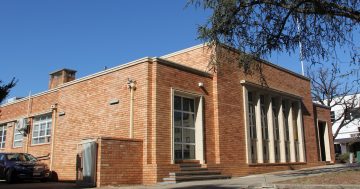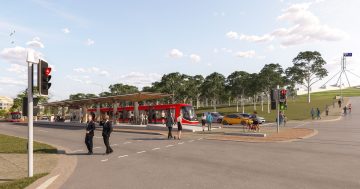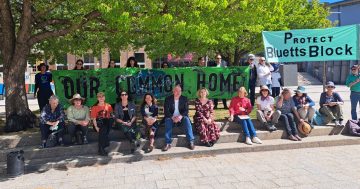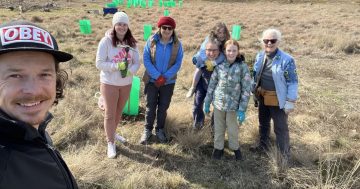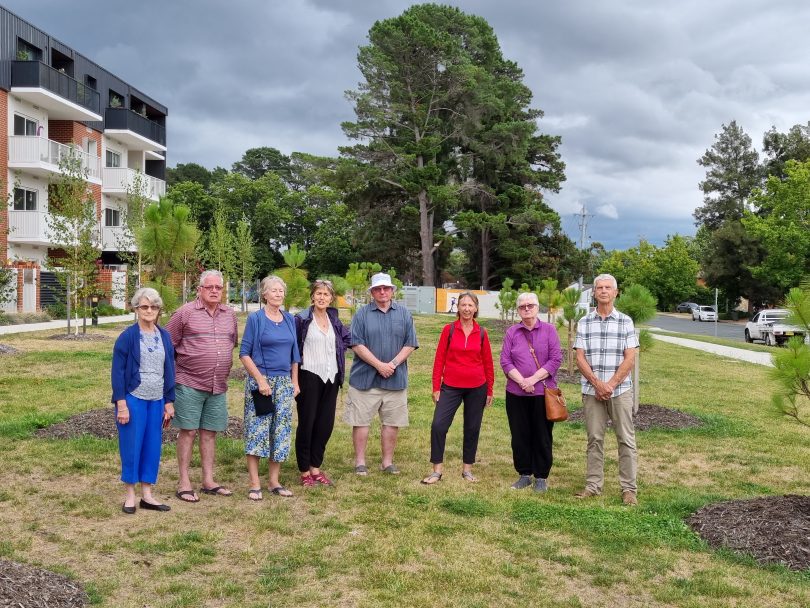
Some of the 40 Bradfield residents calling for appropriate tree planting: (from left) Robin, Neal, Maria, Robyn, Rob, Karen, Tess and Joe. The Heritage Council is insisting the windbreak relic in the background should be replanted with `like for like’ Canary Island pines. Photo: Supplied.
More than 40 residents of new north-facing apartments and townhouses in Downer face the prospect of a heritage-listed green wall rising in front of their properties, blocking out the sun and views.
The ACT Heritage Council ordered two rows of Canary Island pines to be planted on ACT Government land on Bradfield Street. They will replace part of the heritage-listed Monterey pines windbreak grown by the CS&IR Dickson Experiment Farm in the 1940s, torn down to build the The Bradfield housing development.
As part of the approval, the developer was required to replace the Monterey pines as they neared the end of their lives.
Residents first raised their concerns with the Heritage Council and local MLA and Heritage Minister Rebecca Vassarotti last October. But the only concession, to move the plantings three metres toward the road, came a day after 21 trees were planted in front of the 36 apartments on 10 January this year.
Two more rows of Canary Island pines are soon to be planted in front of nine townhouses facing Bradfield Street.
There is also a row of silver birches in front of the properties, planted as part of the development. They will likely fail in the shadow of the pines as the conifers head to their full height of 25 metres.
Residents representative Robyn Sirr said the minister broke off communications last October, deferring to the Heritage Council, which has not been for moving, apart from the 3m concession, a marginal measure that would not make any tangible difference.
The residents had proposed alternative ways for on-site heritage values to be acknowledged, without destroying solar access for residences.
The Heritage Council responded by quoting the solar access rule that apartments only required a minimum three hours of sunlight at midday on the winter solstice.
“It just seems such an inappropriate weighting in era when we really should be aware of what makes good design for climate science, for mental health,” she said.
“To reimpose plantings from the 1940s that were in an agricultural context, and insist on reproducing that permanently again and again just makes no sense.”
The group last wrote to the Heritage Council on 17 February asking when the pines would be transplanted and who would pay for it.
The frustrated residents also wrote to Chief Minister Andrew Barr outlining their case but have yet to receive a response.
Ms Sirr said the plantings made no sense without the original rural setting and all good design demanded north-facing aspects to capture the sunshine.
She said the residents supported appropriate varieties, not a dense windbreak of pines.
“It will make homes dark and increase energy use. It confounds logic,” Ms Sirr said.
“All my windows are north facing, eventually whether I’m in it or not that home will be dark all year round and cold in winter.”
She said some townhouse residents had installed solar panels, which would be useless when the trees overshadowed them.
Ms Sirr said a woman in the complex, who once taught at Downer Primary School in the shade of the windbreak, described the building as cold, dark and miserable.
She said the ACT Government’s own website listed the Canary Island pine as unsuitable for street tree planting due to its height and breadth.
Ms Sirr was not alerted to the situation until she moved in last year.
“I was not made aware when I bought the apartment that evergreens were going to be planted out the front on ACT Government land,” she said.
“It just never occurred to me to ask. I just assumed good design would mean you do deciduous or native trees. I was just shocked when I became aware of it.”
The issue will also impact the nearby proposed Goodwin aged care development in which ageing Montereys will have to come down and be replaced by pines to comply with the heritage ruling.
Ms Sirr said although it would be some time before the pines grew, the decision would affect residents well into the future.












